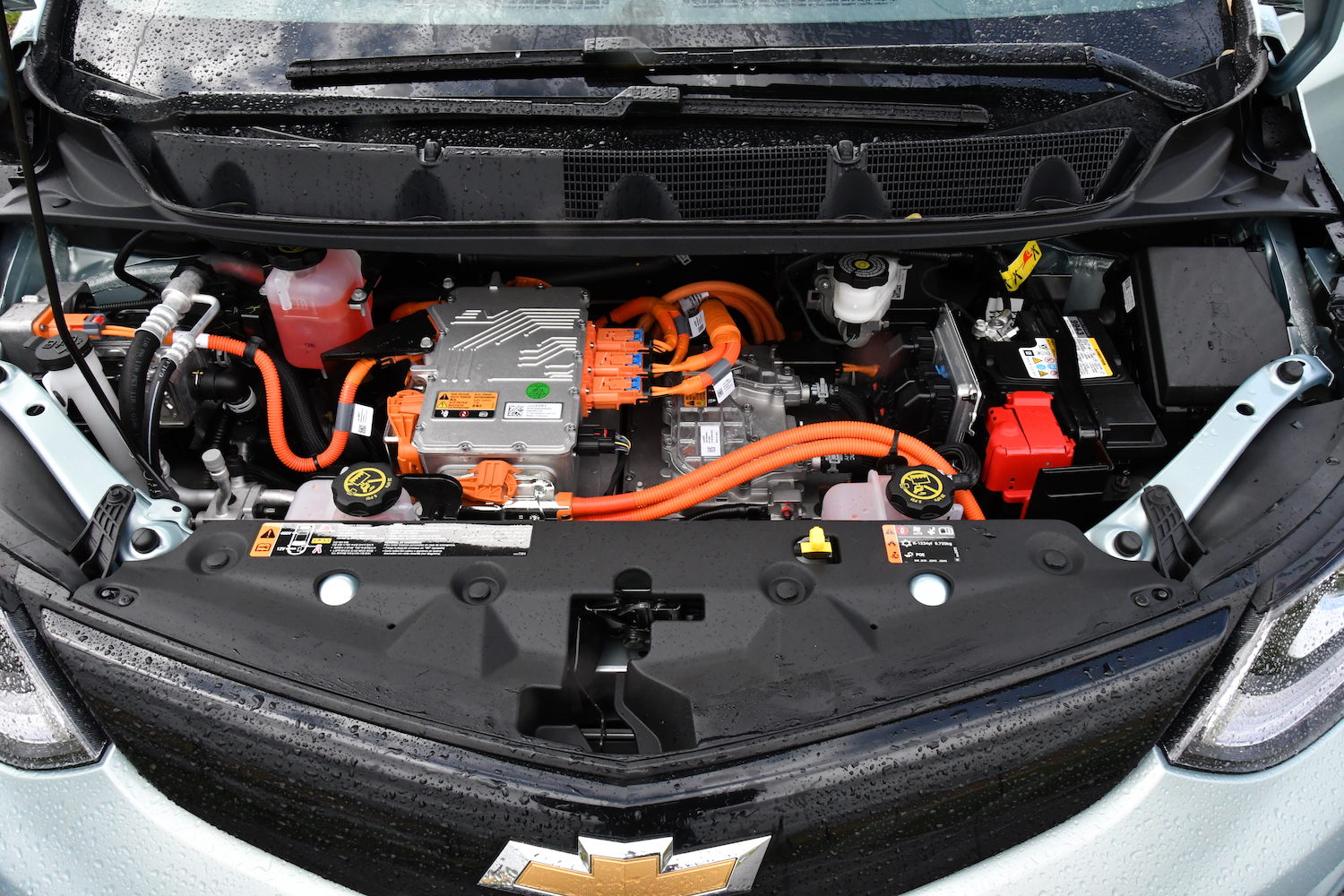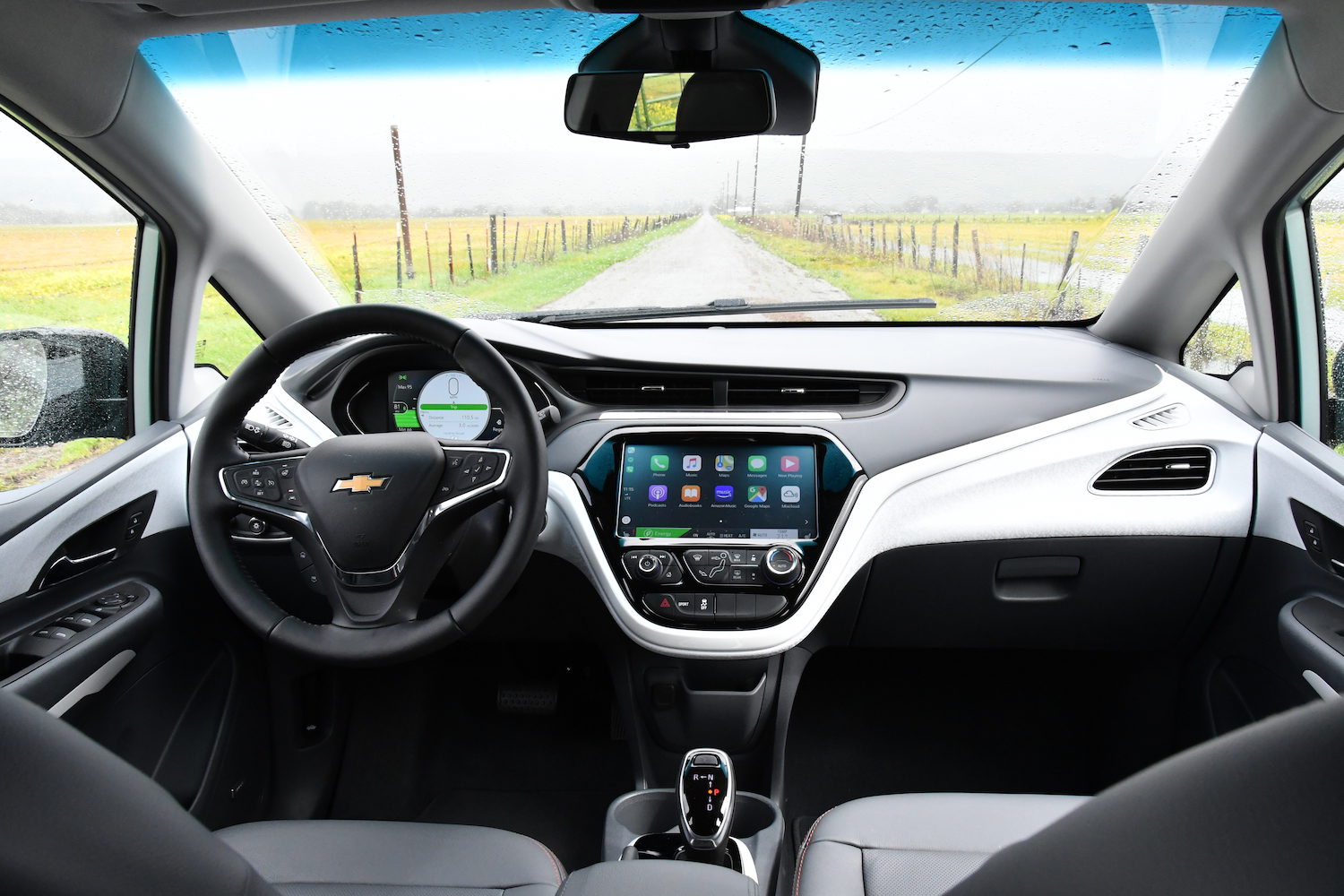Update: A Good/Bad Reflection of Best of 2017
The Chevrolet Bolt, first introduced as a 2017 model, has achieved a loyal following. As it starts its third year in production, the good news is that it still retains all of its 2017 qualities. The bad news is that it still retains all of its 2017 qualities.
Minimal Changes
The 2019 Chevrolet Bolt’s external changes are minimal: two discontinued colors (Arctic Blue and Orange Burst Metallic) and an addition of three new colors—Green Mist, Slate Grey Metallic and Shock (an over the top, solid Chartreuse color).

Inside, the changes are also minimal, with the Driver Confidence II package (a suite of driver assistance technologies) now available on both the LT and Premier trims.
An exciting option for fleet buyers of the Bolt is that it is finally available with a rear window and seat delete package to turn the Bolt into a small electric delivery van or could make for a fantastic Bolt “Surfer Van.”
A Fast-Changing Market
As the 2019 Chevrolet Bolt stands, it is a reasonable BEV, whose number one advantage when it was new three years ago, was its range of 255 miles city or 217-highway miles with what was a respectable class-leading EPA rating of 238-miles range.
Fast forward to March 2019, and that range is just mid-pack with a growing number of competitive BEVs that excel not only in range, but features, size, and value.

The Bolt has always been at a disadvantage when it comes to size, interior room, and cargo capacity. When GM brought the Bolt to market, it was behind in BEV development and needed to deliver a range-topping BEV to market fast. Based on a B-segment vehicle in GM’s Korea Daewoo studio, it is a GM-created unique platform, called the BEV2 that can also be an internal combustion engine (ICE) vehicle in certain markets. GM Korea developed the Bolt in partnership with LG Corporation at the GM Lake Orion Assembly plant in Michigan. Its battery, motor and drive units are manufactured in Incheon, Korea, by LG Corporation.
Today, the Bolt is available in all 50 states and Canada, and was available as the Opel Ampera-e in mainland Europe before GM’s sale of Opel to PSA.
It’s Not Just Range Anymore
The essential features of the Bolt have remained unchanged since its introduction. It is a tall 5-door hatchback with a large greenhouse, a narrow width and short wheelbase. Interior space is maximized with front seatbacks that are tall and thin with minimal lumbar support. The front seat comfort of the Bolt is one of the prime owner objections. The Bolt sports a 200 hp (149 kilowatt (kW) motor with a healthy 266 pounds-feet (361 Newton-meters) of torque and has spirited acceleration, but the chassis has a tough time managing its power. The short wheelbase provides an adequate ride until uneven or undulating roadways degrade things.

The 2019 Chevrolet Bolt also falls short in safety systems. While it offers Driver Confidence packages, they are not integrated and cannot be considered Level 2 autonomous assist systems.
Both L1 and L2 charging standards are supported by the Bolt, but L3 DC fast-charging is a $700 option. The Bolt takes a conservative approach to charging and throttles the power that is used to charge its liquid-cooled lithium-ion battery.
The Bolt has never been able to carry its own weight price-wise and still has an MSRP of between $37,500 for the LT trim and $41,800 for the Premier version, requiring GM to offer deep discounts. Today it has been estimated that GM loses between $6,000 and $8,000 on every Bolt sold or leased.
No Longer Top Dog

Despite increasing production, the 238-mile Bolt continues to have lackluster sales. Its total sales in 2018 were seventh overall among EVs with only 18,300 vehicles sold. It is expected that in 2019, with the 226-mile Nissan Leaf, 239-mile Kia Niro EV and 258-mile Hyundai Kona Electric becoming available in volume, the competition in the $35,000 to $45,000 range will be intense.
And let’s not forget the elephants in the room, the 220-mile Tesla Standard Range and 240-mile Standard Range Plus Model 3.
Bargain Basement Value
The 2019 Chevrolet Bolt is going to have a challenging time competing with the BEV field today especially when it comes to price, size, and features. The good news is that GM is still behind the Bolt, and will most likely pile on additional incentives for those BEV intenders where price is their number one consideration. For the time being, the Bolt still qualifies for the $7,500 federal tax credit, but expect that to start decreasing this year as has happened with Tesla.
With that said, the Chevy Bolt continues to be a favorite with the Clean Fleet Report Staff which counts a loyal Bolt owner among its numbers. The Bolt is a respectable vehicle; expect it to be a bargain for BEV buyers on a budget.
Related Stories You Might Enjoy—Our Time with the Bolt
Personal: Two Years with My Chevrolet Bolt EV
Event: Chevrolet bolt EV Autocross Experience
Interview: Chevrolet Bolt EV at One Year
Road Test: 2017 Chevrolet Bolt EV
Personal: One Year with My Chevrolet Bolt EV
Personal: My Chevrolet Bolt EV—A Six-Month Update
First Drive: 2017 Chevrolet Bolt EV
Comparison Test: 2018 Chevrolet bolt vs. Nissan Leaf
News: Bill Mattos, One of the First Chevrolet Bolt Onwers
Make sure to opt-in to the Clean Fleet Report newsletter (top right of page) to be notified of all new stories and vehicle reviews.
Disclosure:
Clean Fleet Report is loaned free test vehicles from automakers to evaluate, typically for a week at a time. Our road tests are based on this one-week drive of a new vehicle. Because of this we don’t address issues such as long-term reliability or total cost of ownership. In addition, we are often invited to manufacturer events highlighting new vehicles or technology. As part of these events we may be offered free transportation, lodging or meals. We do our best to present our unvarnished evaluations of vehicles and news irrespective of these inducements.
Our focus is on vehicles that offer the best fuel economy in their class, which leads us to emphasize electric cars, plug-in hybrids, hybrids and diesels. We also feature those efficient gas-powered vehicles that are among the top mpg vehicles in their class. In addition, we aim to offer reviews and news on advanced technology and the alternative fuel vehicle market. We welcome any feedback from vehicle owners and are dedicated to providing a forum for alternative viewpoints. Please let us know your views at publisher@cleanfleetreport.com.

5 thoughts on “Road Test: 2019 Chevrolet Bolt EV”